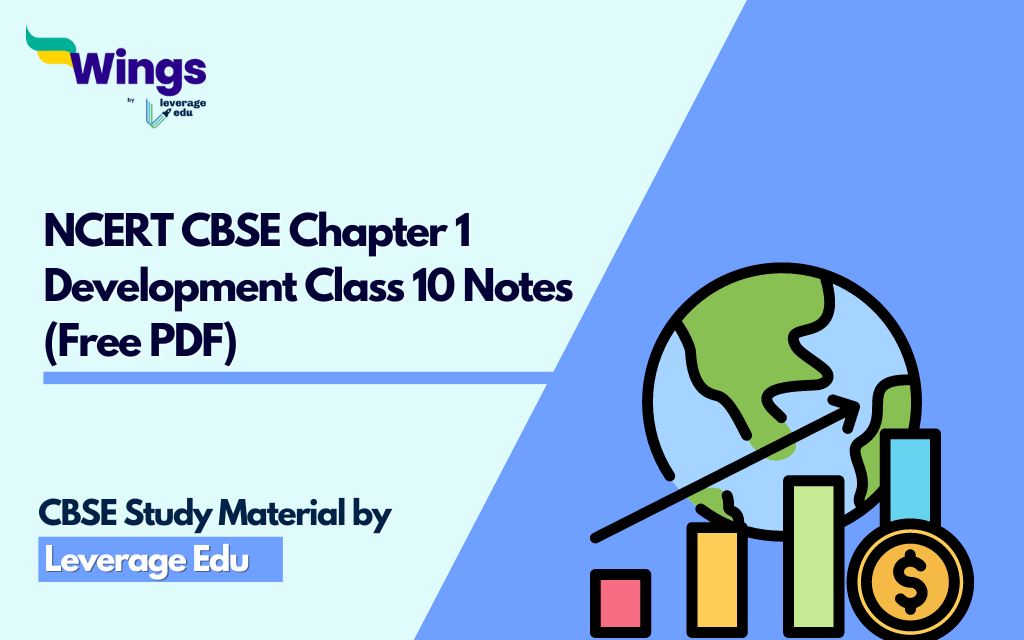In NCERT CBSE Chapter 1 Development Class 10 Notes you will start learning about ‘Development’. You will explore more about development issues in higher classes.
This chapter answers many questions, such as what a country should be like, what essential things we need, if life can be better for everyone, how people should live together, and if more equality is possible.
These answers come not only from Economics but also from History and Political Science, as our present lives are influenced by the past.
Contents
What Development Promises – Different Peoples, Different Goals
Different people have different developmental goals. What is development for one person might not be for another and could even be destructive.
Income and Other Goals
People seek more income because money and the material things it buy are important. However, the quality of life also depends on non-material things like equal treatment, freedom, security, and respect.
For development, people look at a mix of goals, not just better income but also other important aspects of life.
National Development
Different people have different and sometimes conflicting ideas about a country’s development.
How to Compare Different Countries or States?
To compare countries, income is a key attribute. Countries with higher incomes are more developed than those with lower incomes. Since countries have different populations, comparing total income doesn’t show what an average person earns. So, we compare average income, which is the total income of a country divided by its population. This is also called per capita income.
| Average Income = Total Income of Country / Total Population of Country |
Also Read: NCERT Class 8 Geography Chapter 1 Resources Notes (Free PDF)
In World Development Reports, per capita income is used to classify countries. Countries with a per capita income of US$ 12,056 per year or more in 2017 are considered rich countries. Countries with a per capita income of US$ 955 or less are called low-income countries, such as India.
Income and Other Criteria
When thinking about a nation or region, public facilities are as significant as average income.
Public Facilities: These services are provided by the government to its citizens, including infrastructure, sanitation, public transport, health care, and water.
Sustainability of Development
Sustainable development meets the needs of the present without compromising future generations’ ability to meet their needs. Scientists warn that our current levels and types of development are not sustainable. Examples include the overuse of groundwater and the exhaustion of natural resources.
We hope these CBSE Class 10 Social Science Notes help you in your studies. Keep learning and stay tuned for more updates on CBSE and NCERT.
Also Read: NCERT Class 8 History Chapter 2 From Trade to Territory
FAQs
Ans: Per capita income is the average income earned per person in a country. It is calculated by dividing the total income of the country by its total population. This measure helps to compare the economic well-being of different countries or regions by showing what an average individual earns.
Formula: Per Capita Income = (Total Income of Country)/(Total Population of Country)
Ans: Some of the public facilities provided in India include:
Infrastructure: Roads, bridges, and public buildings.
Sanitation: Clean water supply, sewage systems, and waste management.
Public Transport: Buses, trains, and metro services.
Healthcare: Hospitals, clinics, and vaccination programs.
Education: Public schools, colleges, and universities.
Water Supply: Safe drinking water to households and public places.
Ans: Environmental Protection: It minimizes environmental damage by reducing pollution, conserving natural resources, and protecting ecosystems.
Economic Growth: It promotes long-term economic growth by ensuring that resources are available for future generations.
Social Well-being: It improves the quality of life by ensuring access to clean water, air, and other resources and by promoting social equity and reducing poverty.
Resilience: It helps communities and economies become more resilient to environmental changes and economic shocks.
Intergenerational Equity: It ensures that future generations have the resources they need to meet their own needs.
Related Reads
For more topics follow LeverageEdu NCERT Study Material, today!
 One app for all your study abroad needs
One app for all your study abroad needs














